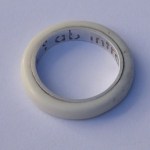blogosphere
Last year much was made by climate-change deniers of a poorly referenced section of one of the IPCC reports of 2007 that said "up to 40% of the Amazon rainforest could be sensitive to future changes in rainfall." It turned out that the claim was based on solid science, despite the best efforts of those who just can't bring themselves to trust professional climatologists. You can read the whole sordid tale here. I revisit the issue because of a new paper about to be published by the American Geophysical Union that bears on this question.
"Widespread Decline in Greenness of Amazonian Vegetation…
In addition to all the obvious reasons, tech blogger Jillian York recently noted that some web filters use comments, and links in comments, to categorize sites as pornography. This means even a blogger who diligently refrains from any, er, PhysioProfisms, can be classed as offensive and filtered based on comments alone. York explains how recently her blog was blocked by Websense:
My assumption was that their automated system was based on keywords, and that my blogging about Helmi Noman's paper ("Sex, Social Mores, and Keyword Filtering: Microsoft Bing in the 'Arabian Countries'") had caused…
Christopher Reiger has a great post at Hungry Hyaena about public communication strategies used by scientific advocacy groups, and where artists should adopt similar strategies:
Most Americans see science as extraneous esoterica crafted by white-coated wonks. Similarly, contemporary art is seen as the province of effete Onanists devoid of "family values." But the respective responses of the two realms to these ugly public perceptions is critically different. The scientific community has confronted the issue head-on, spilling ink, hosting panel discussions, and building programs. Whether or…
Reader Laura alerted me to a self-described "weird art & style blog" that many of you may enjoy - it's called Synesthesia Garden. A recent topic was custom lab-grown bone wedding rings (above):
Harriet Harriss, one of the participants, says: "I love the idea that it's precious only to us because it is, literally, us. It's almost worthless to anyone else. To take something that is from myself and make it into something precious is a lovely thing and means quite a lot to me."
She has also recently covered Nita Collins' scarred, grotesquely plaintive art dolls and Nicola Samori's faceless…
I guess it's not surprising, my dopamine is rising
And my glutamate receptors are all shot
I'd surely be bemoaning all the extra serotonin
But my judgement is impaired and my confidence is not
Allosteric modulation
No Long Term Potentiation
Hastens my inebriation
Give me a beer. . .
Physiology professors, I trust you know what to do with this holiday treasure by cadamole. Nothing makes neurobiology seem relevant like a beer.
For everyone frustrated with the unscientific, spotty, incoherent and often inaccurate coverage of the Japanese nuclear plant situation: one geo-blogger and her dad try to help out. Now THAT is how you use your scientific expertise to improve public understanding in a meaningful, immediate way. Bravo, georneys!
On Wednesday, I gave a breakout session talk on science policy jobs at MIT. I love talking about science policy, so it's not too hard to get me to do it - it's harder to get me to stop - and we had a great group of Boston-area grad students who asked excellent questions. Very fun.
The talk did force me to reflect on how different things are in my life since I left the bench. I'm certainly working no fewer hours (apparently Scienceblogs has been experiencing a denial of service attack this week, and I did not even notice. Bad sign). I still often have to do things I don't particularly enjoy,…
Scientific American does - and they have new info on whether pseudonymity really decreases blogger credibility.
A. I am so glad I was on hiatus during the whole Pepsigate thing. Whew.
B. I have been dying to write about blogger pseudonymity like, forever, and NO ONE WANTS TO HEAR IT. WAAAAAH.
C. Okay! All better now!
. . . by Matt Nisbet, formerly of Framing Science, and now at at Big Think/Age of Engagement:
Too often art is viewed instrumentally by science, as a vehicle for gaining public support or promoting science. This is unfortunate. Science and art should be viewed as cultural equals with art an important expression of public appreciation but also concern over the nature and consequences of science.
Gratifyingly, my post on Nabokov and Gould has generated interesting feedback, including this post by Jonah Lehrer, who expands on Nabokov's own opinion of how his science informed his art. (Let's just say he and Gould didn't see eye-to-eye.) The post includes some wonderful Nabokov quotes about science, art, and butterflies, and Lehrer's writing is, as always, lovely:
For Nabokov, the entire universe was just an elaborate puzzle waiting to be figured out. It didn't matter if one was talking about a novel or the evolution of an insect or a chess problem: Nabokov knew that the way to solve the…
An invitation from scienceforcitizens.net:
As record levels of snow blanket much of the United States this year, Science For Citizens is collaborating with an important climate research project at the University of Waterloo called Snow Tweets. We're pleased that this is the first of many scientific projects that you'll be able to do on Science for Citizens.
To help researchers track climate change, we're requesting that you find a ruler, put on a warm coat, go outside, and measure the depth of snow wherever you happen to be. And then report the depth to us right here. That's all there is to…
I'm honored to get a brief shout-out today from the awesome Ed Yong in his post on female bloggers. I mention this not to toot my own horn, but to call attention to the amazing number of women blogging about scientific research - something I rarely do anymore at BioE, but which is very important to public science literacy, science policy, and inspiring young women to choose careers in science.
Many of the women Ed mentions are already on my blogroll (Sheril Kirshenbaum, Jennifer Ouellette, Scicurious, Janet Stemwedel, to name a few), but I clearly have to add more - including my friend…
Last week it was the abuse of a 140-character context-free nano-report on an hour-long discussion on the challenges of communicating science. This week it's the credulous coverage of a 50-page report on climate change. Seems that no matter the length of the material at hand, there are plenty of people eager to jump to conclusions without having the decency to stop and think first.
At least there was no slander this time. But damage has been done to the credibility of climatology, thanks to that old adage, a little knowledge is a dangerous thing. Now claims of unwarranted alarms have that much…
I've long been ambivalent about the merits of Twitter. Some may recall my "Why Twitter is Evil" post of a while back. That was written with one cheek mostly occupied by my tongue. It now seems clear that, whatever the original designs, the 140-character telegraph has become an invaluable network-building and maintenance tool, particularly for authors, activists trying to organize constituencies. This is all well and good. But the medium's dark side recently became all too clear following this past weekend's wonderful Science Online 2011 conference.
The story begins Saturday afternoon at an…
Here are some essay links I've had open as tabs in my browser for over a week, waiting to be posted. Unfortunately, I don't have time to do the extensive commentary they deserve, so I'm admitting that, and just posting them already. Enjoy.
Graphical Abstracts & Biologists as Designers
Andrew Sun discusses "graphical abstracts" at nature network:
Although they are irrelevant to the quality of the research in my opinion, graphical abstracts (GAs) are in fact increasingly appreciated nowadays. No matter you like them or not, chances are that you have to draw one in order to publish your…
What if Ke$ha joined Science Cheerleader? Yes, it would be awesome/disturbing/disorienting. No, it hasn't happened - yet. But this parody may induce a double-take:
Now, NASA should clearly have just used THAT at their press conference.
In case you're not into the auto-tuney-teeny-bop scene, the video is a parody of Ke$ha's "We r who we r" . And this is a parody of "Take it off" about meteors, asteroids, and comets.
From Jank.
No. "If we could gather all the electric eels from all around the world," they would free their imprisoned brother from his Yuletide servitude and bio-tase the crap out of you, bro.
Just sayin'.
Because people have been discussing Google ngrams a lot, and because there are always major caveats to new datamining methodologies, I have to link Natalie Binder's excellent series of posts urging caution, not only about the methodology, but about assuming too much about ngrams' utility in social research.
Binder says,
The value of the Ngrams Viewer rests on a bold conceit: that the number of times a word is used at certain periods of time has some kind of relationship to the culture of the time. For example, the fact that the word "slavery" peaks around 1860 suggests that people in 1860…
The ultimate bioephemera: art you eat! This cephalopod by specialty cake artist Karen Portoleo is definitely NOT a cake wreck (although if there were a little cake(ship)wreck under those tentacles, it might not be a bad addition). Karen previously made a "gingerbread" house with an octopus icing and tiling the roof. For serious.
Thanks to Patricia for the link! (Check out Patricia's art blog, too).
Olivier Valsecchi's portraits of the nude human body, caught in motion, haloed in dust, could convey an incredibly complicated subtext. Or not. "Dust" by Olivier Valsecchi, via ChangetheThought via Street Anatomy.


